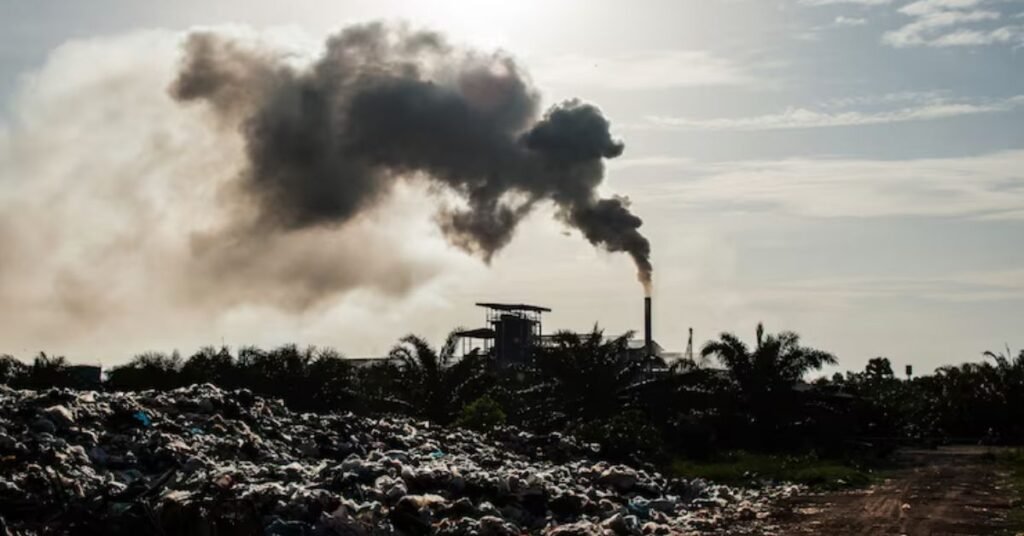Land pollution, often known as soil contamination, is an important ecological issue with far-reaching effects that impact the health of the natural world and of people. Whenever dangerous substances, garbage, or pollutants are disperse over the ground, it affects the soil, water, air, and ecosystems negatively. This article will look at the numerous impacts of land contamination on the ecosystem and human health as well as the efforts which may be taken to lessen these effects. In order to make sure that your environment stays clean it would be in your best interests to book a skip.
What Exactly Is Land Pollution?
When waste, compost, and other kinds of poisons are deposited on the ground, they contaminate or polluted the environment. Human actions including garbage and trash from ships, rigs, and wastewater treatment plants that wash ashore contribute to land contamination. Land pollution is the term use to describe the deterioration of the earth’s land surfaces, above as well as below ground. The root reason is the buildup of solid and liquid wastes that pollute soil and groundwater. The likelihood of pollution of the land increases with soil permeability.
1. Effects on Health
a. Food and Water That Have Been Tainted:
Contamination of food and water sources constitutes one of land pollution’s most immediate effects. Plants and crops may soak up pollutants from the soil, rendering them unfit for human consumption. This may result in long-term persistent illnesses, poisoning, and digestive issues.
b. Respiratory Conditions:
Humans can breathe in dangerous chemicals and particulates that are release into the air as a result of land pollution. Long-term exposure to air contaminants may result in lung cancer, bronchitis, asthma, and other respiratory issues.
c. Skin Conditions:
Allergies and skin conditions can be brought on by coming into contact with polluted soil or water. The skin might become irritated by chemicals in the soil, which can result in rashes, itching, and various other dermatological issues.
2. Effects on the Environment:
a. Loss of Biodiversity:
Ecosystems and wildlife suffer as a result of land contamination. Reduced biodiversity is the result of contaminated soil causing habitat disruption in numerous species. Ecological balance & food chains may be impact in a cascading manner by species extinction.
b. Degradation of Soil:
The quality of the soil may be lower by pollutants, which makes it less fertile and unable to sustain the development of plants. Food scarcity and decreased agricultural production may result from this.
c. Water Pollution:
Contaminants often leak into groundwater and surface water bodies as an outcome of land contamination. It may result in water pollution that could harm aquatic life and render drinking water supplies hazardous.
d. Habitat Destruction and Deforestation
As polluted regions become inhospitable for numerous organisms, land pollution may lead to habitat loss and deforestation. This only makes the decline of biodiversity even worse.
3. Financial Effects:
a. Decreased Productivity in Agriculture
Crop yields & agricultural output might decline as a result of land contamination. Contaminated soil could lead to losses to farmers, raising food costs & straining local economies.
b. Increasing Medical Costs
Higher healthcare expenditures for impacted individuals and communities might come from medical consequences of land pollution, such as respiratory issues & skin conditions.
c. a Decrease in Property Value
Values of homes frequently decrease in places where there are known issues with land pollution. Homeowners and business owners in the impacted areas may have monetary consequences as a result.
4. Social Effects:
a. Community Displacement:
Communities could be force to evacuate in circumstances of severe land contamination due to adverse health effects and ecological harm.
b. Utilising Sustainable Land:
Land contamination may be avoided through the promotion of sustainable land use practises like organic farming and ethical waste management.
5. Community Awareness:
It is critical to educate the public about the effects of land pollution and the significance of appropriate land management. Education may encourage sustainable practises and more conscientious consumer choices.
6. Assistance To Affected Community:
To address the social effects of land degradation and advance environmental justice, it is crucial to offer resources and support to marginalised communities that are affected by it.
What Does Land Pollution Prevention Entail?
To reduce solid waste emissions on soil, you may recycle items like cloth, plastic bags, as well as glass in your home as opposed to throwing them away. Recycling assists in preserving the environment by reducing the quantity of solid waste which is dump in landfills.
Conclusion:
The ecology, social stability, and human well-being are all seriously threaten by land contamination. For preventive measures to avoid and minimise the consequences of land contamination, it is crucial to comprehend the myriad effects of this problem. We may endeavour to create an environment that is healthier and cleaner for both the present and future generations by putting in place laws and regulations, environmentally friendly land use practises, and remediation initiatives.
